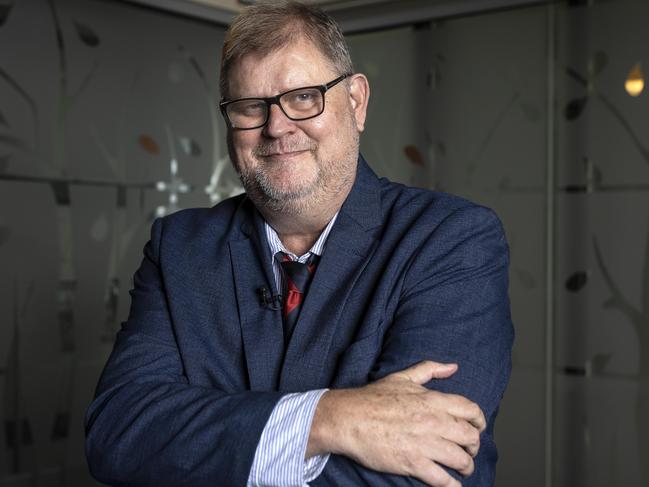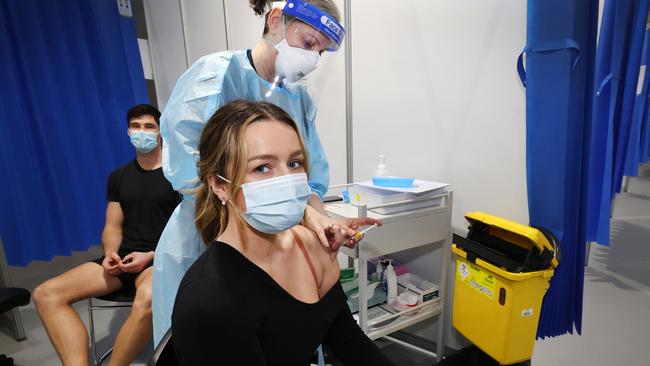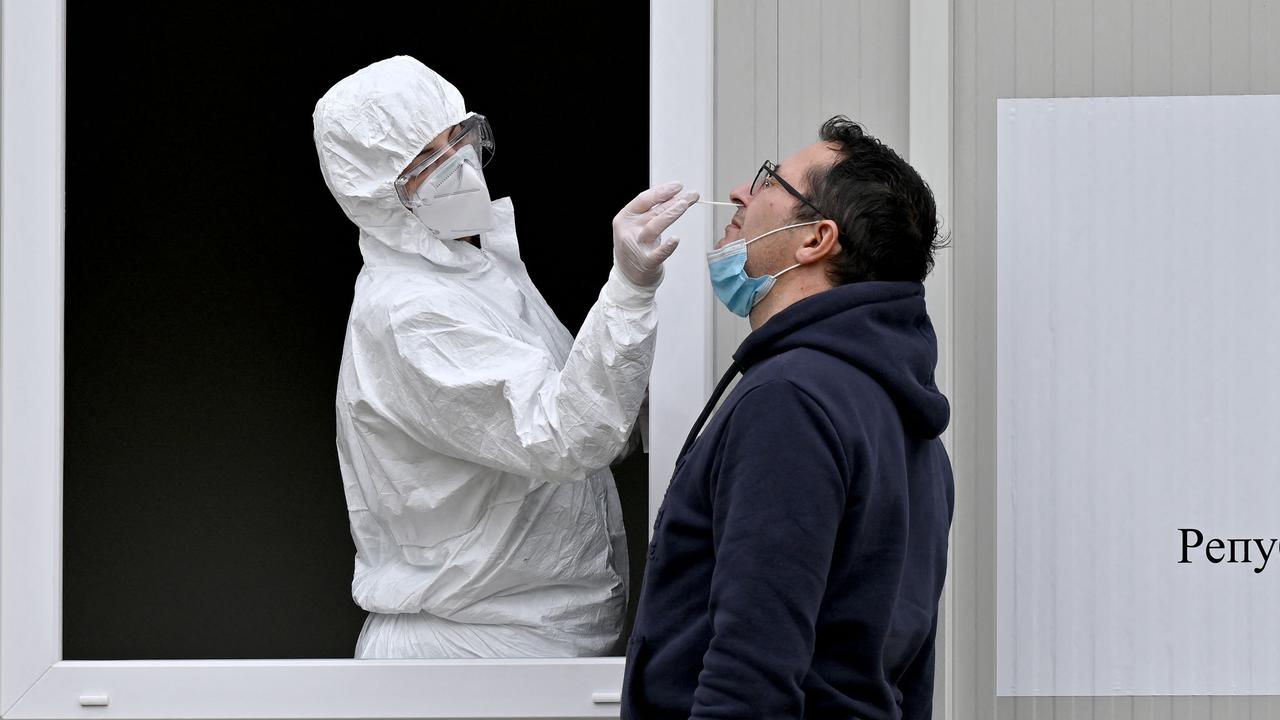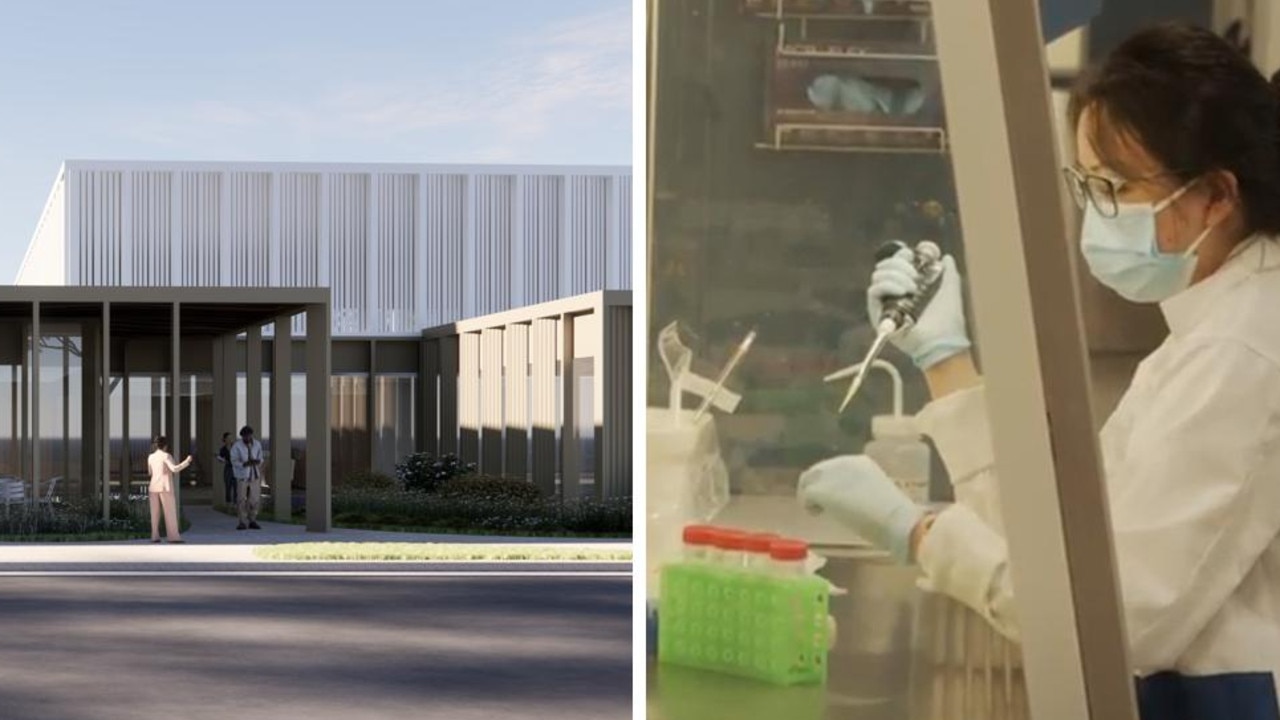Professor Robert Booy: Boosters are key weapon against nimble virus
Omicron and Covid-19’s other strains are extraordinary with “astonishing infectiousness”. Now, one Australian expert explains what is vital to our defence.
Coronavirus
Don't miss out on the headlines from Coronavirus. Followed categories will be added to My News.
Omicron is extraordinary, with more than 50 mutations different from the Wuhan strain that emerged two years ago.
Millions of new cases, in only two months, have been driven by Omicron’s astounding infectiousness and partial ability to evade human immunity.
As reassuring as reports from Europe and Africa are, of lesser likelihoods of hospitalisation and death – a halving or more – the easy transmissibility of the virus between humans has resulted in rapid rises in severe outcomes in Australia.
Time is of the essence, in so many ways. Brief encounters, distanced and demure, masked and
muted, are not nearly as likely of becoming a transmission event as an indoor party with dancing, singing and hugging.
Physical distancing works immediately but only in the moment.

A vaccine booster can, by contrast, protect for months, against Omicron and related variants.
For most people, two vaccine doses in 2021 provided protection against severe disease for at least four to six months.
Waning of antibody levels was reported later in-2021, prompting the call for a third dose, a booster, even before the Omicron variant suddenly emerged in November 2021.
Omicron sealed the deal. It confirmed the need for an immune top-up. Some of Omicron’s many mutations allow it to escape, at least partially, the protection built on natural or vaccine-induced antibodies.
A booster does not only reduce severe Omicron disease by 85-95 per cent, it can also substantially prevent milder infections and transmissions, at least in the weeks after vaccine receipt.
Time really is key. A booster usually takes a week at least to induce protection. Getting an appointment itself may take at least a week too.

We must continue to prioritise the vulnerable and frontline members of the community.
Immunosuppressed people need a third dose for protection, injected a minimum of two months after the second dose. Residents of aged care and disability facilities need boosting too, as do their carers.
Health care workers need earlier protection to keep working and caring for the ill. People with chronic disease and the Indigenous also need priority.
In Australia we have an assured large supply of mRNA vaccines, especially Pfizer.
My GP gave me a booster in late December and then I inquired which it was. I trusted my doctor. You should too.
We’ve learnt so much from other countries.
Vaccines are safe and effective, but boosters are needed to deal with Covid’s variants.
Europe and North America have a storm of disease, driven by winter’s indoor crowding and super-spreading celebrations: millions of daily cases, especially severe in the unvaccinated.
Many millions are arising in Asia and Africa.
Australia is striving toward delivering two million booster doses per week to our own people, while we have tens of millions of doses to spare.
We could feasibly aim to export just as many doses weekly to our neighbours where many people have not even had their first vaccination.
Multiple chains of transmission are driving viral mutation overseas.
Omicron arose out of Africa, and although it means small, it’s a huge challenge.
Let’s hope that we can prevent an Omega (massive) variant by vaccinating and boosting both ourselves and our neighbours.
– Professor Robert Booy is an infectious diseases expert, clinician and epidemiologist on the Immunisation Coalition board and from the University of Sydney.
More Coverage
Originally published as Professor Robert Booy: Boosters are key weapon against nimble virus
Read related topics:Explainers




